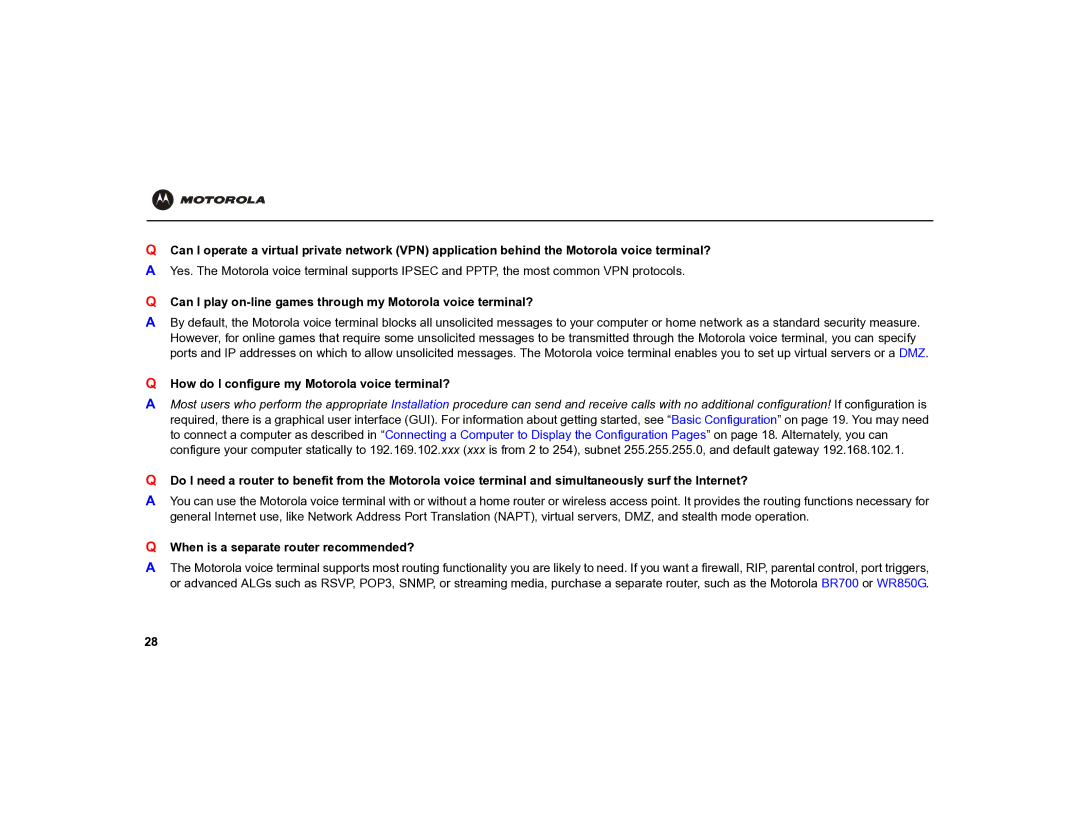QCan I operate a virtual private network (VPN) application behind the Motorola voice terminal? A Yes. The Motorola voice terminal supports IPSEC and PPTP, the most common VPN protocols.
QCan I play
ABy default, the Motorola voice terminal blocks all unsolicited messages to your computer or home network as a standard security measure. However, for online games that require some unsolicited messages to be transmitted through the Motorola voice terminal, you can specify ports and IP addresses on which to allow unsolicited messages. The Motorola voice terminal enables you to set up virtual servers or a DMZ.
QHow do I configure my Motorola voice terminal?
AMost users who perform the appropriate Installation procedure can send and receive calls with no additional configuration! If configuration is required, there is a graphical user interface (GUI). For information about getting started, see “Basic Configuration” on page 19. You may need to connect a computer as described in “Connecting a Computer to Display the Configuration Pages” on page 18. Alternately, you can configure your computer statically to 192.169.102.xxx (xxx is from 2 to 254), subnet 255.255.255.0, and default gateway 192.168.102.1.
QDo I need a router to benefit from the Motorola voice terminal and simultaneously surf the Internet?
AYou can use the Motorola voice terminal with or without a home router or wireless access point. It provides the routing functions necessary for general Internet use, like Network Address Port Translation (NAPT), virtual servers, DMZ, and stealth mode operation.
QWhen is a separate router recommended?
AThe Motorola voice terminal supports most routing functionality you are likely to need. If you want a firewall, RIP, parental control, port triggers, or advanced ALGs such as RSVP, POP3, SNMP, or streaming media, purchase a separate router, such as the Motorola BR700 or WR850G.
28
